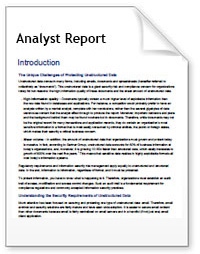In today's business landscape, organizations rely heavily on digital systems, applications, and webpages for their daily operations. However, with the increasing use of technology comes growing risks of unauthorized access to sensitive accounts and data. Companies that hold privileged access to critical systems, applications, and social media platforms are particularly vulnerable to cybersecurity threats targeting an organization’s human resources such as employees, contractors, and vendors.
The recent news report detailing a ransom scam involving the use of AI to impersonate a kidnapped daughter's voice highlights the extent to which cybercriminals are leveraging technology to exploit people's vulnerabilities for financial gain. This scenario highlights how sophisticated criminals can use AI and deepfakes to manipulate individuals and extort money from them.
The impact of cybercrime on businesses continues to increase, with devastating consequences. According to the latest statistics, in 2022, the FBI received over 900,000 cybercrime complaints, resulting in losses totaling $5.3 billion. Cybercriminals have become increasingly sophisticated, using a variety of tactics such as phishing scams, identity theft, ransomware attacks, and exploiting AI-powered technologies to breach security measures.
Businesses must remain vigilant and take necessary precautions to protect themselves from unauthorized access to critical systems, applications, and sensitive accounts. One of the key steps businesses can take to mitigate these risks is by conducting a privileged access management (PAM) risk assessment.
Implementing robust cybersecurity measures and educating employees on the importance of safe online practices is also crucial. Businesses should also regularly update their security protocols, conduct regular vulnerability assessments, and invest in cybersecurity technologies such as firewalls, intrusion detection systems, and encryption tools.
By taking proactive steps to prevent cybercrime, businesses can avoid potentially costly data breaches and damage to their reputation. It is essential for businesses to prioritize cybersecurity and stay up to date on the latest developments in cybersecurity threats and prevention measures. Conducting regular risk assessments, training employees, and implementing robust security protocols are all essential steps towards safeguarding sensitive accounts and maintaining business continuity in the face of cyber threats.
While taking risks is inherent to business operations, conducting a Privileged Access Management risk assessment is essential for organizations. And it should be done while considering the acceptable risk profile, and what level of risk the business is willing to accept to achieve its goals. Such an assessment can help evaluate an organization's PAM policies, procedures and controls, with a view to identify potential security risks and vulnerabilities that could arise from privileged access to critical systems and applications. By evaluating the risk assessment in the context of the business’ goals, a more comprehensive evaluation can be achieved.
Here are steps that organizations should follow to conduct an effective PAM risk assessment:
Step 1: Identify privileged users and assets
The first step in a PAM risk assessment is to identify all privileged users and assets within the organization. This includes employees, contractors and third-party vendors who have access to critical systems and applications.
Additionally, organizations must identify the assets that these users have access to, such as servers, databases and applications.
Step 2: Determine the level of access
Once the privileged users and assets have been identified, the next step is to determine the level of access that each user has to the assets. This includes identifying the types of privileges that users have, such as administrative access, root access or superuser access. Additionally, organizations must identify any policies or procedures that are in place to limit access to critical assets.
Step 3: Assess the risks
After identifying privileged users and assets and determining the level of access, organizations must assess the risks associated with privileged access.
This includes identifying potential threats and vulnerabilities that may arise from privileged access, such as unauthorized access, data breaches and insider threats. Additionally, organizations need to evaluate the potential impact of these risks on their operations, reputation and financial health.
Step 4: Implement controls
Once the risks have been identified, organizations must implement controls to mitigate these risks. This includes implementing policies and procedures to limit privileged access, such as role-based access controls and least privilege access. Additionally, organizations must implement monitoring and auditing controls to detect and prevent unauthorized access and ensure compliance with regulatory requirements.
Step 5: Review and update the assessment regularly
Finally, organizations must regularly review and update their PAM risk assessment to ensure that it remains current and effective. This includes updating the assessment to reflect changes in the organization's Privileged Access Management policies and procedures, as well as changes in the threat landscape.
Conducting a PAM risk assessment is essential for organizations that rely on privileged access to critical systems and applications. By following the steps outlined above, organizations can identify potential risks and vulnerabilities and implement controls to mitigate these risks. Regularly reviewing and updating the assessment will ensure that the organization remains protected against evolving cybersecurity threats.





